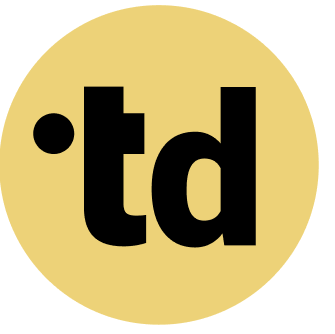Key Takeaways
Optimizing task allocation between people and AI requires a deliberate strategy to prevent chaos, as over 90% of companies struggle with AI integration.
A successful hybrid team leverages AI for repetitive and data-intensive tasks while reserving complex problem-solving, creativity, and strategic roles for humans.
Team Architects can use a simple four-step framework (Identify, Assign, Reserve, Define) to create clear roles and responsibilities, turning friction into flow.
The age of AI in the workplace is here, with 75% of knowledge workers already using it. Yet, this rapid, employee-led adoption often bypasses strategy, leaving 60% of leaders without a clear implementation plan. This disconnect creates chaos, not clarity. The hero of this story is the "Team Architect"-the leader who intentionally designs roles for human-AI collaboration. This guide provides the blueprint for that design, focusing on a structured approach to optimizing task allocation between people and AI to reduce overload and build stronger, more effective teams.
Practical Framework for Team Architects
As a Team Architect, you can apply these principles to your organization:
- Map Current State: Document existing roles and responsibilities using a tool like teamdecoder.
- Identify Gaps: Where are roles unclear? Where do humans and AI agents overlap?
- Define Clear Boundaries: Specify which tasks are handled by humans vs. AI agents.
- Create Accountability: Assign clear decision rights for each role.
- Iterate and Improve: Continuously refine based on team feedback.
Decode the New Overload: When AI Amplifies Chaos
The pressure on teams is immense, with many employees struggling with the pace and volume of work. Many turn to AI for relief, yet over 90% of organizations report significant difficulties integrating these tools with existing systems. This creates a paradox: the intended solution contributes to the overload. Employees are bringing their own AI to work, but without a central strategy, it creates data silos and inconsistent workflows.
In Germany, nearly one-third of employees have seen a new AI application introduced at work since 2022. While a significant number of believe AI can improve their work by handling repetitive tasks, the reality is often messy. This bottom-up adoption, happening while a significant number of European employees worry about their AI skills, highlights a critical gap in organizational development. The lack of a unified plan for managing AI and human roles is the source of this new, tech-driven chaos. This reactive approach prevents teams from realizing the true benefits of hybrid work.
Achieve Hybrid Flow: From Task Conflict to Task Clarity
The goal is to transform this friction into flow, creating a system where humans and AI augment each other's strengths. This starts with a clear strategy for the roles and responsibilities within your team. A German study found that while AI excels at information processing, humans retain a major advantage in creativity, collaboration, and leadership. The objective is not replacement, but augmentation-creating a 'cognitive exoskeleton' for your team.
Achieving this requires a deliberate approach to workload planning and allocation. When task allocation is clear, teams can harness AI to increase efficiency and improve decision-making. For example, AI can analyze thousands of data points in seconds, freeing up a human team member to focus on the strategic implications of that analysis. This clarity turns the human-in-the-loop model from a buzzword into a powerful operational reality. With a defined structure, you can begin building a truly hybrid team.
Build Your Hybrid Team: A 4-Step Task Allocation Framework
Team Architects can bring order to the chaos by implementing a structured process for task allocation. This four-step framework provides a repeatable template for defining who-or what-does what.
- Identify and Automate Repetitive Tasks: Begin by mapping all team processes and isolating tasks that are rule-based and recurring. More than 50% of German employees believe AI's primary benefit is eliminating such tasks. This is the lowest-hanging fruit for AI integration.
- Assign Data-Intensive Work to AI: Pinpoint any workflow that requires processing large datasets, like market analysis or performance metric tracking. AI can handle these duties with greater speed and accuracy than any human, improving productivity by up to 40% in some areas.
- Reserve Complex Problem-Solving for Humans: Tasks requiring emotional intelligence, ethical judgment, negotiation, or creative strategy should remain with human team members. These transversal skills are where people still hold a massive advantage.
- Define Clear Handoff and Review Points: Document the exact points where a task moves from AI to human and vice versa. This is critical for quality control and accountability in any human-AI collaboration workflow. For instance, an AI can draft a report, but a human must approve it.
This structured approach provides the governance needed to scale hybrid teams effectively. It ensures that you are using the right resource for the right task.
Measure the Gains: The Tangible ROI of a Clear Hybrid Model
Optimizing task allocation delivers measurable results beyond just feeling more organized. Companies that successfully integrate AI see tangible improvements in performance. For example, some studies show that AI can help new or low-skilled employees improve their productivity by a significant portion. This proves that a well-defined hybrid model is a direct investment in your team's capability.
The benefits extend to your entire operation. By automating routine work, you free up a significant amount of time-some employees report saving several hours per week. This time can be reinvested into high-value activities like innovation and customer engagement. You can try teamdecoder for free to start mapping these roles. Understanding the roles of AI in teams allows you to build a business case based on efficiency gains and strategic focus. This clarity on roles and outcomes is how you move from AI experimentation to real business transformation.
Make Bots and Humans Click: The Team Architect's Playbook
As a Team Architect, your role is to guide this change management process. Success depends on creating a culture where technology empowers people. In Europe, many employees in organizations with integrated AI feel confident in their understanding of it, compared to just many in organizations without. Your playbook should focus on building that confidence.
Here are some playful tips for your hybrid team governance:
- Our Playful Tip: Host a "Bot & Me" workshop to map out daily tasks. Have team members identify one to three repetitive tasks they would happily give to an AI assistant. This makes the process of planning task handoffs a collaborative game, not a top-down mandate.
- Deep Dive: Develop a skills matrix that distinguishes between "AI-ready" tasks and "human-centric" skills. This provides a clear path for employee development and shows that the organization values human capabilities like critical thinking.
- Our Playful Tip: Create a "Hybrid Team Charter" that outlines the purpose of each AI tool and its relationship with human roles. This simple document can reduce anxiety and align Many people on the team structure.
- Deep Dive: Implement a feedback loop where teams regularly report on the effectiveness of their AI collaborators. This continuous improvement process ensures your task allocation model evolves with new technology and team needs.
This proactive approach to organizational development ensures your team scales effectively from day one. It transforms the abstract concept of human-AI teamwork into a practical, daily reality.
From Blueprint to Breakthrough with teamdecoder
A framework is powerful, but putting it into practice require Over many tech staff spend up to four hours daily fixing data and system issues, a clear sign of integration failure.egration failure. teamdecoder is designed to prevent this by providing a visual platform to define and manage roles and responsibilities in a hybrid team. It is the magic tool that delivers the clarity and flow your team needs to conquer chaos.
By mapping out tasks, handoffs, and dependencies in one place, you make your hybrid operating model visible to Many people. This is how you embed effective methods for human-AI teamwork directly into your workflows. The platform helps you operationalize your strategy, turning your well-designed blueprint into a high-performing reality. It makes the entire process of change feel less like a struggle and more like play. See our pricing.
Try teamdecoder for free - shape your team and make change feel like play!
More Links
German Federal Institute for Occupational Safety and Health (BAUA) offers a publication search form with resources on AI and work design.
OECD presents a detailed review of Artificial Intelligence in Germany.
Deloitte explores generative AI and its impact on the future of work.
Fraunhofer IAO provides insights into projects and topics concerning work and innovation, potentially involving AI.
Plattform Lernende Systeme offers a whitepaper on the implications of AI.
Federal Agency for Civic Education (bpb) provides an article on the impact of artificial intelligence on the labor market.
FAQ
What is the biggest challenge in allocating tasks between people and AI?
The biggest challenge is the lack of a clear strategy and vision. Many companies suffer from chaotic, employee-led AI adoption without a framework for how the technology should integrate with human roles, leading to inefficiencies and data silos.
How does teamdecoder help with AI and human task allocation?
teamdecoder provides a visual platform to clearly define and communicate roles, responsibilities, and workflows within a hybrid team. It helps you map out task handoffs between people and AI, ensuring Many people understands the new operating model.
Should employees be worried about AI taking their jobs?
The focus is on task augmentation, not job replacement. AI is best suited to handle specific, repetitive tasks, which frees up employees to concentrate on more strategic and creative work that requires a human touch. Proactive upskilling is key.
What is a 'Team Architect'?
A 'Team Architect' is anyone-a consultant, HR leader, or department head-who actively designs and builds team structures, roles, and responsibilities. They are crucial for successfully navigating the shift to hybrid human-AI teams.
How do I start building a hybrid human-AI team?
Start small. Identify one process or workflow that has clear, repetitive tasks. Use our 4-step framework to re-allocate those tasks and measure the impact. Use the learnings from this pilot to scale your efforts across other teams.
Where can I find templates for hybrid team roles?
teamdecoder offers templates and tools to help you get started. You can also download resources like our 'Dream Team Builder' guide to help structure your workshops and define roles from day one.





